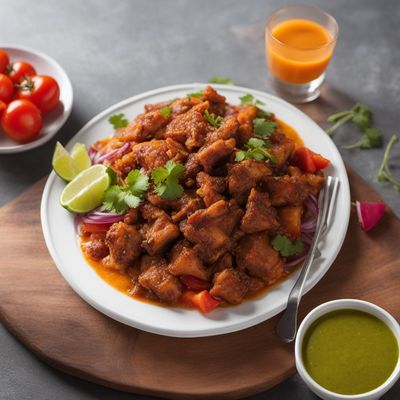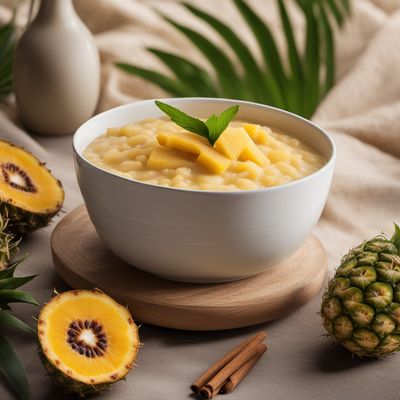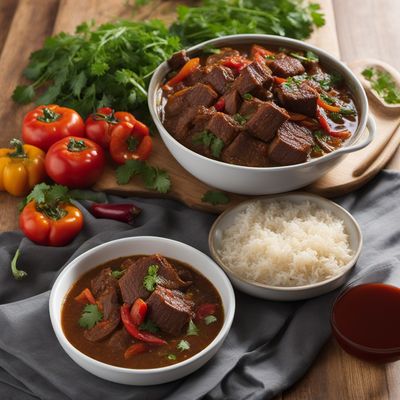
Recipe
Baltic-style Pickled Vegetables
Baltic Brine: A Tangy Twist on Pickled Vegetables
4.4 out of 5
Indulge in the flavors of Baltic cuisines with this delightful recipe for Baltic-style Pickled Vegetables. This traditional dish from the Baltic region combines the vibrant colors and crisp textures of fresh vegetables with a tangy brine, resulting in a refreshing and zesty culinary experience.
Metadata
Preparation time
15 minutes
Cooking time
5 minutes
Total time
20 minutes (plus 24 hours for pickling)
Yields
4 servings
Preparation difficulty
Easy
Suitable for
Vegetarian, Vegan, Gluten-free, Dairy-free, Low calorie
Allergens
N/A
Not suitable for
Paleo, Keto, Low-carb, Nut-free, Soy-free
Ingredients
In this adaptation of the Ecuadorian Chilera to Baltic cuisine, we replace the traditional South American ingredients like aji peppers and cilantro with Baltic vegetables such as cucumbers, carrots, bell peppers, and onions. The brine is also adjusted to include Baltic sea salt, which adds a unique flavor profile to the dish. We alse have the original recipe for Chilera, so you can check it out.
-
2 cucumbers, thinly sliced 2 cucumbers, thinly sliced
-
2 carrots, julienned 2 carrots, julienned
-
1 red bell pepper, thinly sliced 1 red bell pepper, thinly sliced
-
1 yellow bell pepper, thinly sliced 1 yellow bell pepper, thinly sliced
-
1 onion, thinly sliced 1 onion, thinly sliced
-
2 cups (470ml) white vinegar 2 cups (470ml) white vinegar
-
2 cups (470ml) water 2 cups (470ml) water
-
1/4 cup (50g) sugar 1/4 cup (50g) sugar
-
2 tablespoons Baltic sea salt 2 tablespoons Baltic sea salt
Nutrition
- Calories (kcal / KJ): 80 kcal / 335 KJ
- Fat (total, saturated): 0g, 0g
- Carbohydrates (total, sugars): 19g, 14g
- Protein: 2g
- Fiber: 3g
- Salt: 2.5g
Preparation
-
1.In a large bowl, combine the sliced cucumbers, carrots, bell peppers, and onion.
-
2.In a saucepan, heat the white vinegar, water, sugar, and Baltic sea salt over medium heat until the sugar and salt dissolve completely.
-
3.Pour the hot brine over the vegetables in the bowl.
-
4.Stir gently to ensure all the vegetables are coated with the brine.
-
5.Cover the bowl with plastic wrap and let it cool to room temperature.
-
6.Once cooled, transfer the pickled vegetables and brine to a sterilized jar or container.
-
7.Seal the jar tightly and refrigerate for at least 24 hours before serving.
-
8.The pickled vegetables can be stored in the refrigerator for up to 2 weeks.
Treat your ingredients with care...
- Cucumbers — Choose firm and fresh cucumbers for the best texture in the pickled vegetables.
- Baltic sea salt — The unique flavor of Baltic sea salt enhances the taste of the brine. If unavailable, you can substitute it with any high-quality sea salt.
Tips & Tricks
- For a spicier version, add a few slices of Baltic chili peppers to the pickling mixture.
- Experiment with different vegetables like radishes or cauliflower to create your own variations of Baltic-style Pickled Vegetables.
- Serve the pickled vegetables alongside grilled meats or fish for a refreshing contrast of flavors.
- Use the leftover brine as a tangy dressing for salads or as a marinade for chicken or tofu.
- To enhance the visual appeal, add a sprig of fresh dill or a few whole peppercorns to the jar before pickling.
Serving advice
Serve Baltic-style Pickled Vegetables as a side dish with traditional Baltic meals like smoked fish, rye bread, and boiled potatoes. They also make a great addition to charcuterie boards or as a topping for open-faced sandwiches.
Presentation advice
Arrange the pickled vegetables in a glass jar or a decorative bowl to showcase their vibrant colors. Garnish with fresh herbs like dill or parsley for an added touch of freshness.
More recipes...
For Ecuadorian cuisine » Browse all
More Ecuadorian cuisine dishes » Browse all

Helado de paila
Paila Ice Cream
Helado de paila is a type of ice cream that is made in a large copper pot called a paila. It is a traditional dessert from Ecuador that is made...

Chilera
Chilera is a spicy condiment that is popular in Central America, particularly in Nicaragua and Honduras. It is made with a variety of pickled...

Papa
Papa is a traditional dish from Peru that is made with potatoes and a variety of other ingredients. It is a hearty and flavorful dish that is...









